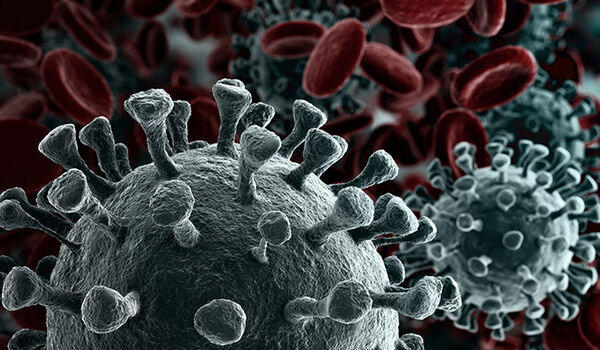This article was originally posted on The Birmingham Brief and has been reposted with permission.
Covid-19 has had a devastating effect globally. Ever since it was declared a public health emergency by the World Health Organization on January 30th 2020, the death toll from the disease has been around 3.5 million which experts believe to be an underestimate. And this is not counting deaths from other health conditions neglected because of Covid. Death apart, millions more continue to suffer its aftereffects several months after catching the disease.
The range of people who have been affected have been diverse and included celebrities and heads of state. This has given the impression that the disease does not discriminate between a prince and pauper, a viewpoint has often been emphasised in government briefings and the media. However, when looking beyond such headlines, the data suggests wide variance in the likelihood of catching the disease and in particular death rates vary significantly across socio-economic and demographic groups.
A recent study we undertook showed the wide variance of age-adjusted mortality during the first wave in England. We found that local areas with an over-representation of individuals who are relatively socio-economically deprived and belong to ethnic minority particularly ‘Black-Caribbean’ and ‘Black-African’ are at increased risk of dying from Covid. Our estimates showed considerable heterogeneity within the same broad ethnic category. Within the so-called ‘South-Asian’ community, there were significant differences in mortality depending on changes in the percentage of Bangladeshi, Indian and Pakistani population across the different deprivation quartiles. The study shows that both deprivation and ethnicity matter, as does the interaction between them in explaining Covid mortality differences in local authorities within England.
To illustrate, while the overall average age-standardized mortality was 35.50 per 100,000 people, this rose to 47.21 per 100,000 people for the most deprived areas compared to 27.73 per 100,000 people for the least deprived areas.
Looking at the interaction of economic deprivation with dis-aggregated ethnicity showed considerable heterogeneity within the BAME community. For example, a 1 percentage point increase in ‘Black-African’ population in the poorest LADs increased mortality rate by 2.86 per 100,000 population with the corresponding increase for the ‘Black-Caribbean’ population in the poorest LADs being 9.66 per 100,000 population. However, within the Asian community, the interaction effect varied and was also different across deprivation quartiles presenting a far more complex picture. Such heterogeneity suggests that even within the BAME community, there are other unobserved differences that lead to a differential impact on mortality.
Overall, the analysis findings largely correlate with existing evidence suggesting that economic deprivation with ethnicity are important markers of Covid mortality. As England tries to vaccinate its ways out of Covid restrictions, vaccination of those ethnic and socio-economic groups at increased risk are particularly important. Indeed, given the increased risk, one might be inclined to believe that these groups would exhibit high willingness to be vaccinated. Anecdotal evidence however suggests the opposite with both BAME and socio-economically deprived groups showing a lower willingness and uptake. This anecdotal evidence is confirmed by some recent analysis we have undertaken.
Given these findings, we try to understand what might contribute to low willingness to be vaccinated in these at-risk population groups. A factor that appears to be driving this is lack of institutional trust within these sub-groups, causing vaccine hesitancy. This is further confirmed when looking at the response of those within these vulnerable groups who do not share this lack of trust. People whose answers indicate they are neutral or positive about state institutions and public officials from the at-risk groups indeed exhibit higher willingness to be vaccinated.
There is anecdotal evidence that our results from England have insights globally, with population groups mistrustful of government or public official, such as sections of the Hispanic and African American population in the US, less willing to be vaccinated. Governments across the world need to consider ways to build trust with these vulnerable sections of the population if the world is to find an effective way out of the pandemic.
The brief was co-authored by Siddhartha Bandyopadhyay (University of Birmingham) Kausik Chaudhuri & Anindita Chakrabarti (University of Leeds).
This brief is partly based on finding in the paper ‘The interaction of ethnicity and deprivation on COVID-19 mortality risk: A retrospective ecological study’ by Siddhartha Bandyopadhyay (University of Birmingham) Kausik Chaudhuri & Anindita Chakrabarti , Jose Martin Lima and Joht Singh Chandan (University of Birmingham) forthcoming in Nature Scientific Reports.


